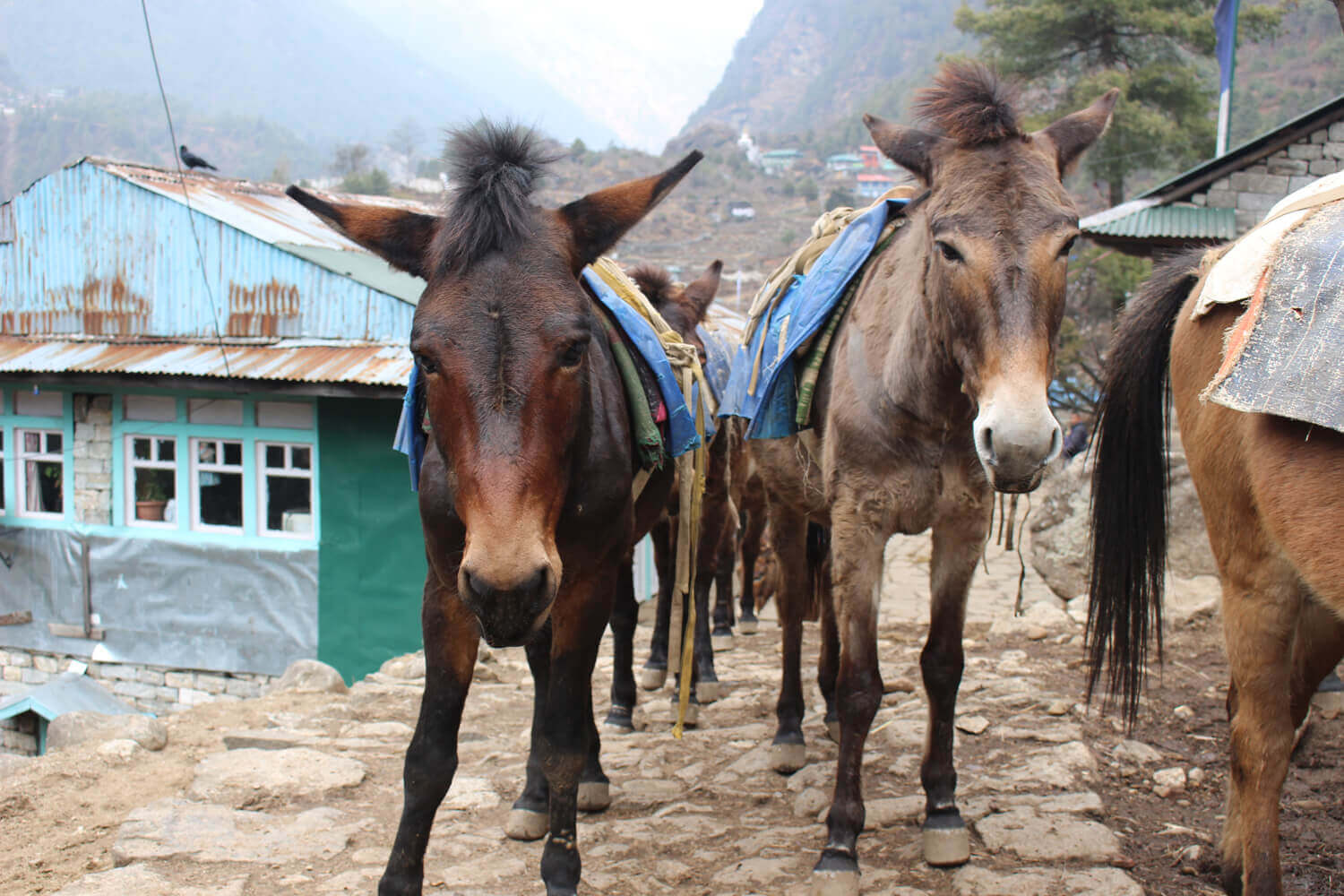Too many mules on the Everest trail

The Sherpas reportedly have a saying that “there’s only one Everest,” meaning that because Everest is the highest mountain in the world it will always be the preferred destination of trekkers, climbers, and extremely wealthy middle aged men. Visitor numbers support this claim -- over 60,000 foreign tourists (not counting support staff) will come to Sagarmatha National Park this year.
Along with the economic benefits there are also downsides such as overcrowded trails, bottlenecks at check posts and bridge crossings, and the feeling of being in a perpetual traffic jam. Every day during the peak season, 500 tourists arrive in Namche Bazar from the south, and 500 from trails east and north.
Read also: Everest fights back, Alton C Byers

The vast majority of these tourists are cordial and having a wonderful time. What is not good about the trekking experience in the Khumbu and on dozens of other popular trekking trails in Nepal these days is the presence of mule trains carrying supplies from Kharikhola (2,500 m) south of Lukla to Namche Bazaar (3,440 m).
Mules were introduced to the Khumbu about 10 years ago in response to the growing number of tourists, and the demand for food and other supplies. Today, there are about 500 mules are based in Kharikhola carrying supplies up from the roadhead.


They have largely replaced the use of dzopkio (yak-cattle cross breeds) for the Lukla to Namche supply run, although dzopkio and yak continue to be used from Namche onward to the higher altitudes. On a recent walk from Phakding to Lukla there well over 100 mules in trains averaging about 15 animals each.
The locals hate them because mules destroy the trails with their sharp hooves, and leave behind so much poop that one seemingly spends more time playing hop scotch than trekking. Worse, they seem to think they have a right of way on the trails. Dzopko and yak always seem to go out of their way to avoid making any kind of contact with humans. But not mules.

There has been talk of building a ropeway from Lukla to Namche capable of delivering the food and other supplies needed for the large and growing tourist trade. Especially if placed beyond the sight of the main trekking trail, a ropeway would provide a more environmentally friendly way of delivering goods. It would also provide a means for transporting pre-processed solid waste, such as shredded plastic water bottles, compacted and baled aluminum beer cans, and other materials from Namche to Lukla where it could then be transferred to Kathmandu for recycling.
The proposal to build the ropeway is being held up by the central government in Kathmandu for reasons that are not entirely clear, but it certainly has the support of the majority of the people here. Meanwhile construction of a motorable road to Chaurikharka, just below Lukla, continues, largely in response to the large number of flight cancellations in Lukla due to weather. Typically, hundreds of tourists have been stuck in Lukla for up to two weeks, and a road would be an alternative access route. Expect the numbers of tourists visiting the Khumbu annually to go keep growing as a result.




Photos: SONIA AWALE
But at least the traditional trail from Lukla to Namche and beyond will remain in its present condition for future generations of mountain lovers to enjoy. This is good news at a time when Nepal continues to relentless destroy its system of once-world class trekking trails through the construction of poorly-planned and often unnecessary roads, such as the Annapurna circuit, Dolpo, Manaslu, and much of the Kangchenjunga treks.
Unplanned road construction has overall negative environmental, economic, and social impact. But that is another story. Let us find an alternative to mules first.
Alton C. Byers, PhD, is Senior Research Associate and Faculty Institute of Arctic and Alpine Research, University of Colorado at Boulder.




